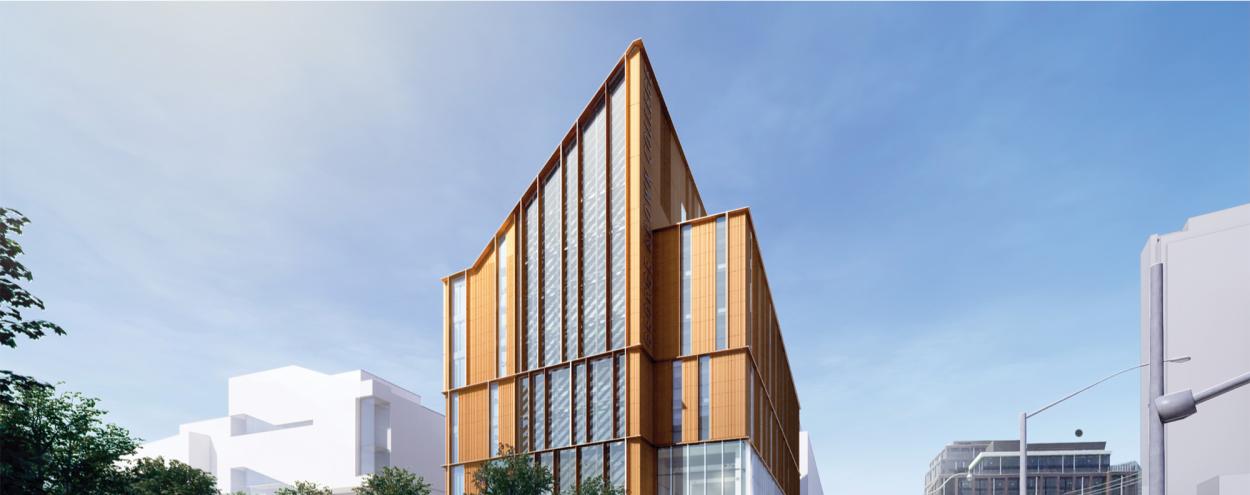
Did you know March 21st is World Wood Day? Established in 2013, the day helps highlight wood as a renewable biomaterial and recognizes its role in a sustainable future.
George Brown College is making a significant investment in the future of sustainable wood construction with Limberlost Place, a new 10-storey mass timber building and the latest addition to the college’s Waterfront Campus. Currently under construction, this net zero carbon emissions building will be the first institutional building of its kind in Ontario.
Until the late 1800s, the construction industry was dominated by ‘brick and beam’ building methods, but as skyscrapers started to appear in the early 1900s, the widespread use of heavy timber gave way to concrete and steel.
In recent years, as the industry begins to embrace more sustainable materials and building methods, mass timber is leading the way for an exciting renaissance in wood construction. Mass timber is a relatively new category of engineered, wood-based structural building materials; among the products are cross-laminated timber (CLT) and glued laminated timber (glulam).
Unfortunately, there’s a lot of misinformation associated with mass timber, so on World Wood Day we’re debunking some of the most common myths about this innovative building material.
Myth: ‘Mass timber buildings are susceptible to fire and burn quickly.’
On the contrary! In the event of a fire, wood burns at a slow and predictable rate; as the exterior char layer develops it protects and insulates the interior sections of the wood and slows the rate of burning.
Myth: ‘Mass timber isn’t sustainable if trees need to be cut down.’
Wood is the only primary structural material that is renewable. Canada's forest management practices are recognized among the best in the world, with more third-party certified lands than any other country. We harvest less than 0.5% of our forests annually and are required by law to regrow every single tree. Prefabricated mass timber components, like the ones in Limberlost Place, are transforming the construction process and the built environment while simultaneously reducing its carbon footprint.
Myth: ‘Mass timber isn’t as strong or sturdy as other building materials.’
Wood components have excellent strength to weight ratio, an advantage that enables mass timber to not only carry heavy loads but perform well during seismic activity. And while sustainably harvested mass timber is carbon neutral, the production of concrete accounts for up to 8 per cent of all human-made greenhouse gas emissions.
Beyond sustainability, mass timber is also contributing to the advent of ‘healthy buildings’. Studies have shown occupants of ‘biophilic’ environments (spaces that include a connection to nature via materials like wood) experience better physical, mental, and emotional health outcomes.
As mass timber is poised to impact the future of design and construction, Limberlost Place has quickly become a global model for the sustainable mass timber movement. To learn more visit www.georgebrown.ca/limberlost.
